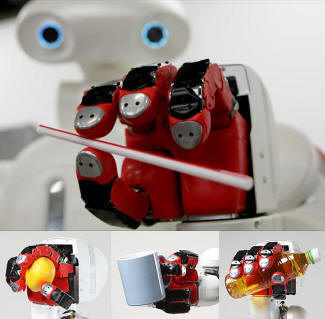|

Well, Twendy-One may not exactly disappear into the fabric of our
lives but there is the potential of becoming an integral part of our
everyday life. Twendy-One is designed to be a robotic helper to
assist with everything from exercise and independent living to
shopping. It's the product of more than 10 years of research led by
Professor Shigeki Sugano and his team at Waseda University, along
with the cooperation of more than 20 private companies, to build a
robot that co-exists with human beings in a super-aging society.
Their goal: create a practical robot that could safely assist the
elderly in everyday tasks. The result is one of the world’s most
advanced humanoid robots.
According to
plasticpals.com: "Its most innovative feature is its mechanical
passive impedance mechanism, which is used throughout its body to
adapt to unexpected external forces. It has a total of 47 degrees
of freedom and can move in virtually any direction. It can bend at
the waist allowing it to pick up objects from the floor, and is
strong enough to support a person’s weight (up to 35kg [77 lbs]) as
they get out of bed or up from a chair. From a practical standpoint, this may not seem like enough, but actually statistics
show that more than half of people requiring nursing care are
relatively healthy and don’t require full assistance."
standpoint, this may not seem like enough, but actually statistics
show that more than half of people requiring nursing care are
relatively healthy and don’t require full assistance."
Twendy-One is almost warm and fuzzy. It's body is covered with
soft, shock absorbent silcone rubber, minimal external wiring and
sensors that sense human touch and if it's being pushed or near
objects. The head has stereo camera/LED eyes and it can roll, pitch
and tilt. The hands though are most remarkable with soft
finger tips, hard nails and the ability to easily pick up and
grasp a wide variety of objects.
Japan set a goal to have an aging-in-place
helper robot by the year 2017. The Twendy developers expect to have
a practical working model by 2015. It's estimated to cost between
$110,350 to $220,700.
|